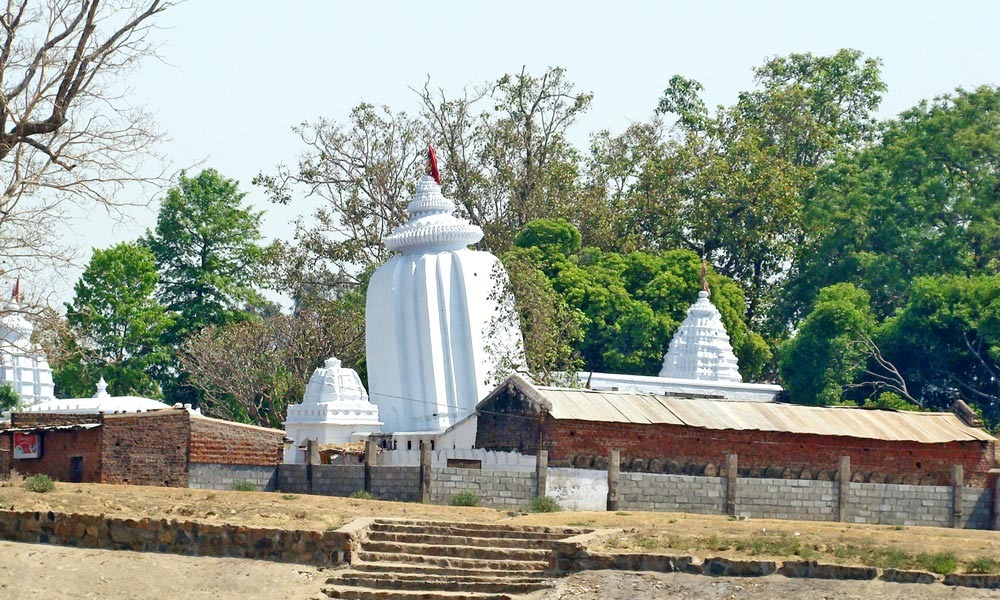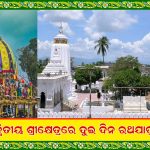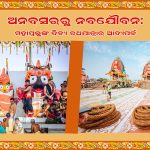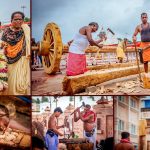Have you ever heard of the Leaning Tower of Pisa or ever visited it? It’s magnificent, right?
Architecture is always fascinating. It gives us a vivid picture of a particular era, including the taste and choices of the rulers who ruled during that period. We see several age-old temples, magnificent palaces, and other architectural wonders which speak volumes about their creators.
Our incredible Odisha is a paradise of architectural wonders which attract tourists, researchers and historians from all over the world. There is one such historic temple in Odisha’s Sambalpur district that many of us do not know about yet! The leaning temple of Huma is a rare leaning temple in the world. A beautiful temple surrounded by mysteries, is situated in a small village in Huma on the banks of the River Mahanadi.
The look of the main temple and other small temples around it is intriguing. Lord Shiva, or Lord Bimaleshwara is the presiding deity of the temple.
A Brief History
The temple belongs to 11th-12th century era and was built by Ganga king Aanangabhima-3. The 5th Chauhan King Baliar Singh built the present temple during the late 17th century. The temple then expanded under the reign of King Ajith Singh during the 18th century, when the other structures were added to it.
The Leaning Wonder
One of the most unique aspects of the temple is that while the temple is leaning toward one side, the rest of the structures lean in the other direction. Apart from the temples, everything else in the compound, including the boundary looks tilted.
According to the priests, the angle to which these structures have inclined has not changed for almost 50 years. The main temple consists of four main parts, Deula, or the sanctum, Mukhasala, Ardhamandapa, and an open pillared Mandapa. The architecture of the temple is said to be in Pancharatha style with Gandi, Bada and Mastaka.
Interestingly the temple leans towards the left. There has been no scientific reason for why the structure is like this. Weak foundation of the temple and defective architecture if any would have disintegrated the temple to rubble ruling out these factors. It stands firm on an elevated rocky bed prone to natural calamities which might have caused internal displacement. Probably frequent floods may have caused the temple to tilt.
Apart from the floods, earthquakes might also be causing the temple to lean sideways. However, Odisha is not earthquake-prone, so it’s ruled out.
Delve into the Legends
It’s not just the look of the temple that fascinates the tourists or the scholars, but also the stories that spark curiosity in people’s minds.
Just as much as the look of the leaning temple astounds you, some legends add to the mystery as well. A unique reddish-colored fish called Kudo is a popular attraction in the place swimming in abundance in the river. These fish are considered highly sacred and locals believe that one who kills them does not survive for long.
Another popular legend is that of a milkman who crossed Mahanadi regularly. He used to provide milk to a stone that consumed every drop. The stone is none other than the divine Shivaling.
It does not end here. There’s yet another story about the place. A cow from a nearby village was a regular visitor. It regularly fed the linga with its milk. The cow’s owner became doubtful when he discovered it was not secreting a healthy amount of milk. He once followed the cow and was amazed when he saw that Shivaling consumed all the milk. Thus he propagated this leading to the construction of the temple.
Witness the Grand Festival
The leaning temple of Huma lights up during the major festivals, especially during Shivratri. Locals visit the fair held on the temple premises.
Best Time to Visit
If you want to witness the leaning temple at its best, October to March is the best time. The weather remains pleasant, and you can attend festivals.
Share your experience below in the comment box
Have you ever heard of the Leaning Tower of Pisa or ever visited it? It’s magnificent, right?
Architecture is always fascinating. It gives us a vivid picture of a particular era, including the taste and choices of the rulers who ruled during that period. We see several age-old temples, magnificent palaces, and other architectural wonders which speak volumes about their creators.
Our incredible Odisha is a paradise of architectural wonders which attract tourists, researchers and historians from all over the world. There is one such historic temple in Odisha’s Sambalpur district that many of us do not know about yet! The leaning temple of Huma is a rare leaning temple in the world. A beautiful temple surrounded by mysteries, is situated in a small village in Huma on the banks of the River Mahanadi.
The look of the main temple and other small temples around it is intriguing. Lord Shiva, or Lord Bimaleshwara is the presiding deity of the temple.
A Brief History
The temple belongs to 11th-12th century era and was built by Ganga king Aanangabhima-3. The 5th Chauhan King Baliar Singh built the present temple during the late 17th century. The temple then expanded under the reign of King Ajith Singh during the 18th century, when the other structures were added to it.
The Leaning Wonder
One of the most unique aspects of the temple is that while the temple is leaning toward one side, the rest of the structures lean in the other direction. Apart from the temples, everything else in the compound, including the boundary looks tilted.
According to the priests, the angle to which these structures have inclined has not changed for almost 50 years. The main temple consists of four main parts, Deula, or the sanctum, Mukhasala, Ardhamandapa, and an open pillared Mandapa. The architecture of the temple is said to be in Pancharatha style with Gandi, Bada and Mastaka.
Interestingly the temple leans towards the left. There has been no scientific reason for why the structure is like this. Weak foundation of the temple and defective architecture if any would have disintegrated the temple to rubble ruling out these factors. It stands firm on an elevated rocky bed prone to natural calamities which might have caused internal displacement. Probably frequent floods may have caused the temple to tilt.
Apart from the floods, earthquakes might also be causing the temple to lean sideways. However, Odisha is not earthquake-prone, so it’s ruled out.
Delve into the Legends
It’s not just the look of the temple that fascinates the tourists or the scholars, but also the stories that spark curiosity in people’s minds.
Just as much as the look of the leaning temple astounds you, some legends add to the mystery as well. A unique reddish-colored fish called Kudo is a popular attraction in the place swimming in abundance in the river. These fish are considered highly sacred and locals believe that one who kills them does not survive for long.
Another popular legend is that of a milkman who crossed Mahanadi regularly. He used to provide milk to a stone that consumed every drop. The stone is none other than the divine Shivaling.
It does not end here. There’s yet another story about the place. A cow from a nearby village was a regular visitor. It regularly fed the linga with its milk. The cow’s owner became doubtful when he discovered it was not secreting a healthy amount of milk. He once followed the cow and was amazed when he saw that Shivaling consumed all the milk. Thus he propagated this leading to the construction of the temple.
Witness the Grand Festival
The leaning temple of Huma lights up during the major festivals, especially during Shivratri. Locals visit the fair held on the temple premises.
Best Time to Visit
If you want to witness the leaning temple at its best, October to March is the best time. The weather remains pleasant, and you can attend festivals.
Share your experience below in the comment box





